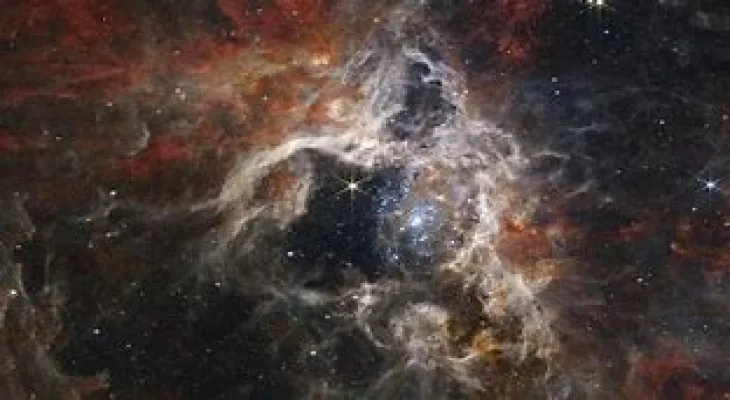Search here
Newspaper
Search here

Arab Canada News
News

Published: October 10, 2022
Edmonton - It seems as if they are using a telescope not only to gaze into space, but Canadian scientists are already using astonishing data and images from the recently launched James Webb Space Telescope to look back at some of the oldest stars ever studied and advance understanding of how new stars and planets are born.
Ghassan Sarrouh from York University, a co-author of a study on star clusters already published using James Webb data, said, "This is what we believe these are - the earliest stars." At the other end of time, Els Peters from Western University looks into the future by studying the hot young stars in the Orion constellation and their impact on the surrounding interstellar material. She said, "In this material is where the next generation of stars will be born." Don't forget the planets.
A team at the University of Montreal is researching exoplanets - especially those Earth-sized ones containing water and other essential elements in their atmospheres that might host life. Natalie Ouellette said, "We already have the first result."
"About a month ago was the first detection of carbon dioxide in an exoplanet." James Webb is the result of $13 billion and more than two decades of work. Behind the Hubble Space Telescope, Webb orbits much deeper into space and is anywhere from a hundred to a million times more sensitive.
Two of its main components - one targeting the telescope with stunning precision and the other analyzing light beyond the visible spectrum - were designed and built in Canada. This gave Canadian researchers the right to claim five percent of the telescope's observation time. Scientists are almost dizzy from the quality of what they are getting. Eric Rosolowsky from the University of Alberta said it is "amazing," using Webb's infrared capabilities to study how black holes create voids in interstellar dust, the causes of new star formation. "It's like someone gave us a set of X-ray specs."
Ouellette said before Webb, astronomers could spend days looking through obscure data, separating signal from noise. "It's remarkable how clean Webb's data is." She said, "With Webb, there's no need to dig through data to find the signal." Sarrouh places Webb's images side by side with those from Hubble.
"You can just see one set of images is really blurred and unclear. The other is filled with all these really sharp points that shine." Results are flowing. Rosolowsky and his team already have 21 papers in progress.
Indeed, scientists feel their mental star maps are changing. Ouellette said it seems, for example, that things probably started much earlier after the Big Bang than previously thought. "Structure may have started earlier than we thought and galaxies began forming earlier than we thought." Rosolowsky confirmed the existence of very large black holes that leave big holes in the centers of galaxies where stars naturally form.
"We can see directly and say this black hole tears apart all these primordial stars before they begin." Peters calls it a new era in astronomy. "It's only been working for three months and we have already learned a lot." Sarrouh said the time is right to be a Canadian astronomer. "It will allow us to see a time we've never seen before. You can almost think of James Webb as a time machine." Edited by: Yusra Bamtraf
Comments